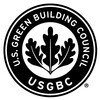Thanks to all those who have commented, and to Tristan for the article. We’ve been working hard on the LEED Interpretations program, and we’re excited to get Phase I out to the world. I’d like to respond to some of the comments and concerns that have been posted. First and foremost, I encourage all interested LEED stakeholders to check out the LEED Interpretations guidance, available here: http://www.usgbc.org/ShowFile.aspx?DocumentID=7662. It speaks to many of the issues raised on this forum. Also, please be aware that there is a members webcast on March 17th in which we’ll be explaining the process and fielding questions. Members can sign up here: https://usgbc.webex.com/usgbc/onstage/g.php?t=a&d=757518247 Possible Conflicts Between Rulings One of the main objectives of the Project CIR/LEED Interpretations system is to allow project teams to move forward with their project as quickly as possible AND to create a precedent that will apply to multiple projects. Unfortunately, as we saw with the CIR process in place before July 2009, this just can’t happen in a single ruling. So, the danger for a conflict between a Project CIR and LEED Interpretation to the same inquiry is necessarily present - but we will do our best to minimize these conflicts. AND, most importantly, the project team that submitted the inquiry will be ALWAYS able to use the Project CIR for that project, even if a LEED Interpretation that contradicts it is issued. 3-6 Month Time Frame We recognize that this is a long time for project teams to wait for a ruling – that’s why we have the Project CIR system in place. 3-6 months is a realistic amount of time for an inquiry to undergo staff review and to move through the meeting cycles of our expert volunteer committees, ensuring that only high quality rulings are sent back to teams and posted in the database. Again, we’ll do our best to move inquiries through the system as quickly as possible. “Why doesn't USGBC simply turn appropriate CIR's into precedent setting interpretations rather than asking us to pay more if we expect it could be precedent setting? “ Because LEED Interpretations go through a different review process than Project CIRs, and that review process takes up resources. We talk more about this on page 3 of the LEED Interpretations guidance document, available at the link above. “Now we are paying to encourage USGBC to fix their own rating system?” Addenda are the intended mechanism for fixing mistakes in the LEED rating systems and reference guides. You can submit a free suggestion for an addenda here: http://www.usgbc.org/ContactUS/LEEDContact.aspx?CMSPageID=2433 (click on ‘General LEED questions’ and then ‘LEED Addenda’ in the dropsdowns). Project CIRs and LEED Interpretations are intended to be a way for project teams to get official rulings about unique situations and strategies not already addressed in existing materials. “Why don't all of these come out in addenda?” We’ve considered many different ways of publishing the information embedded in LEED Interpretations. Posting them as stand-alone rulings in a searchable database is considered more accessible and less unwieldy than continuously growing the rating systems and reference guides. “Now we'll have to monitor two streams of data for inclusion in our reference guides.” The new searchable database, which combines LEED Interpretations and addenda and allows users to export search results, as well as the predictable quarterly releases, are meant to help LEED stakeholders keep up with new information. Choosing Only a Project CIR No one will be forced to pay for a LEED Interpretation. On the page in LEED Online where you type in your inquiry, you have the option to choose ‘yes’ or ‘no’ to the question ‘Do you want to opt into the LEED Interpretations process’. Once you get to the payment page, you can’t change this choice without hitting the back button on your browser. If you’re having trouble, please use the feedback button on that page, or any page within LEED Online, to report an IT glitch. “Is it possible to pay the $180 and only have the global interpretation?” Not right now. This is something we’re considering for the next phase of LEED Interpretations. At the bottom of the landing page for the database, usgbc.org/leedinterpretations, there is a link to a document that talks about the changes we’re considering, and a link to a survey that we’ll hope you’ll use to let us know all your thoughts about the new program. The Searchable Database Mike, I’m really glad you’re getting a lot out of the database!! We are in fact working to add functionality to make it even more searchable. Please check out the document and survey referenced above, and let us know which features would be most useful to you.
You rely on LEEDuser. Can we rely on you?
LEEDuser is supported by our premium members, not by advertisers.
It's been my own experience that project specific CIR's have been the most helpful. One person may have asked the question but a hundred people have been able to apply that answer to their project. It would be really helpful to have all Interpretations incorporated into the Reference Guidebook as addenda.
I'm glad this has been brought back but I think we were all hoping for a little less bureaucracy.
Biggest problem we are having is searchability of the new database. What a mess. Please bring back the ability to search by rating system, category and specific credit. The navigation should be intuitive and not require someone to seek more information to learn how to use it.
How about using Google as the search engine ?
Google can be configured to harvest data for certain well defined parts of a website. Its also free ?
We all know how to drive Google advanced search, and it's about as powerful as is needed ?
Add new comment
To post a comment, you need to register for a LEEDuser Basic membership (free) or login to your existing profile.



